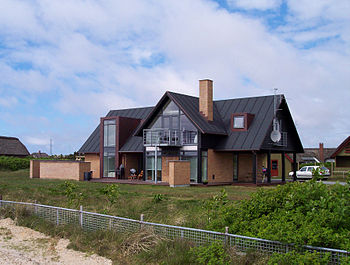Single-family detached home
Definitions and Regional Terminologies:
– Single detached dwelling contains only one dwelling unit.
– Separated by open space on all sides from any other structure.
– Variations in definition across legal jurisdictions or statistical agencies.
– Single-family refers to a building usually occupied by one household.
– Detached means the building does not share walls with other houses.
– Regional terms like single-family home, single-detached dwelling, detached house, separate house.
– Variances in terminologies between countries.
– Primary division of residential property in British terminology.
– Usage of terms in the US, Canada, UK, and New Zealand.
– Housing categorization in the UK and US.
History, Distribution, and Cultural Associations:
– Prevalence of single-family detached homes in rural, suburban, and urban areas across the New World and Europe.
– Development of nuclear family living separately.
– Rise of single-family homes related to industrialization and urbanization.
– Statistics on single-detached house populations in Canada.
– Cultural association with suburbanization and the American dream.
Types of Homes and Architecture:
– Categorization of homes like cottage, bungalow, villa, mansion, palace, castle.
– Description and characteristics of each house type.
– Differences in terminology between American and British English.
– Origin and historical significance of the term ‘villa’.
– Features and characteristics of mansions, palaces, and castles.
– Architecture of single-family detached homes including stand-alone structures, yards or gardens, suburban and rural locations, privacy, and parking facilities.
Benefits, Challenges, and Market Trends:
– Benefits of detached homes such as privacy, property control, outdoor space, appreciation in value, customization, and expansion.
– Challenges of detached homes like higher maintenance costs, heating and cooling expenses, yard upkeep, isolation from neighbors, and limited availability in urban areas.
– Market trends including high demand in suburban areas, price variations, shift towards smaller homes for affordability, interest in energy-efficient features, and modern amenities.
Environmental Impact and Sustainability:
– Detached homes consume more energy for heating and cooling.
– Larger carbon footprint compared to attached or multi-family homes.
– Urban sprawl contributes to the loss of green space and wildlife habitats.
– Potential for increased water usage for landscaping.
– Retrofitting for energy efficiency to reduce environmental impact.
This article needs additional citations for verification. (December 2009) |
A single-family detached home, also called a single-detached dwelling, single-family residence (SFR) or separate house is a free-standing residential building. It is defined in opposition to a multi-family residential dwelling.

